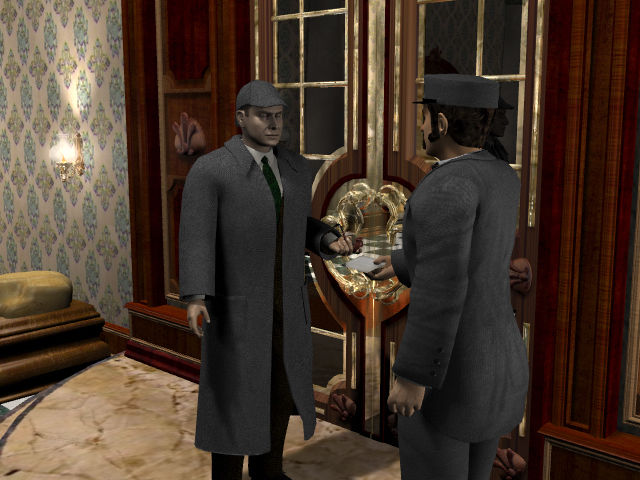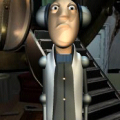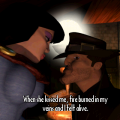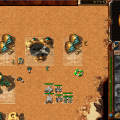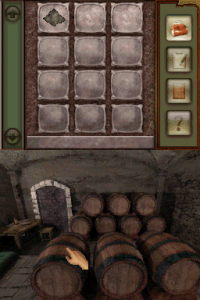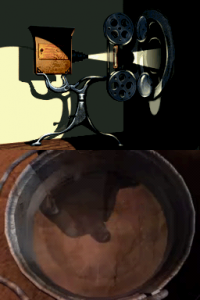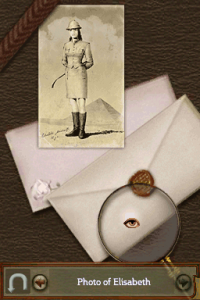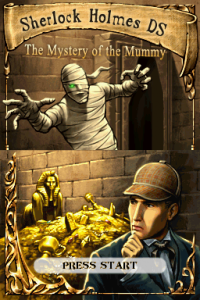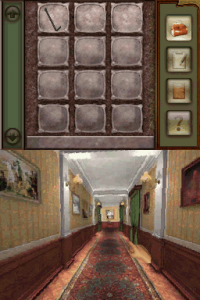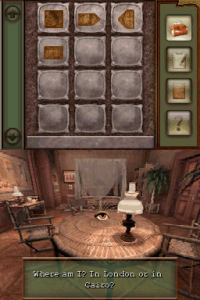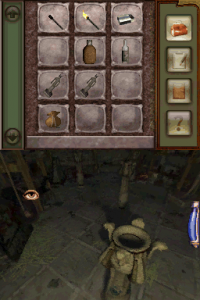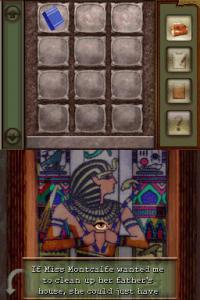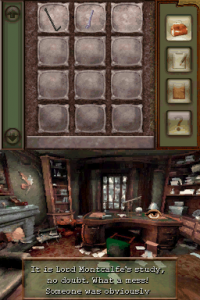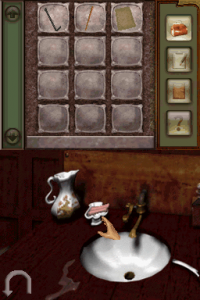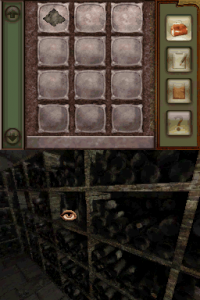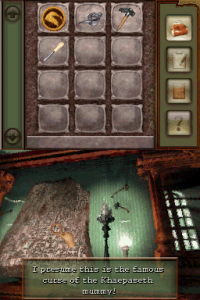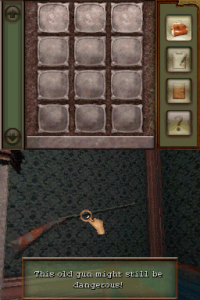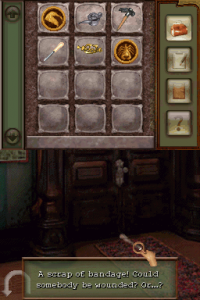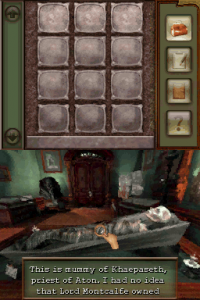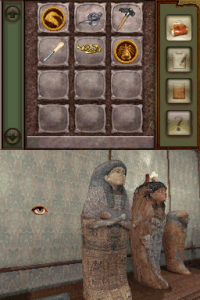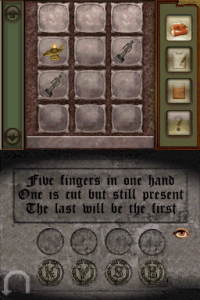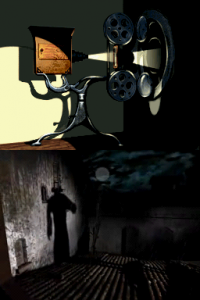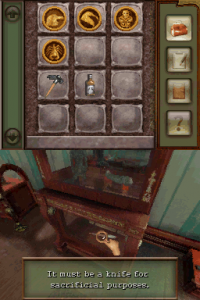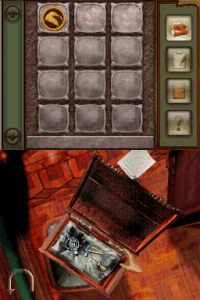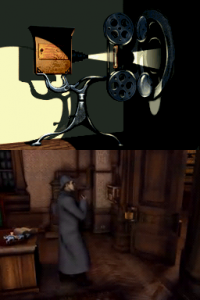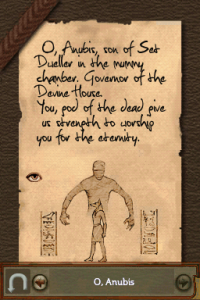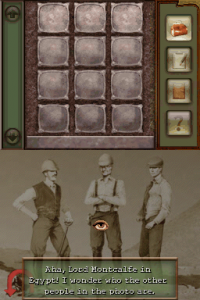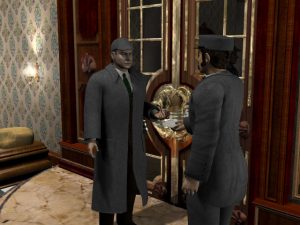- Sherlock Holmes: The Mystery of the Mummy
- Sherlock Holmes: Secret of the Silver Earring
- Sherlock Holmes: The Awakened (2006)
- Sherlock Holmes: Nemesis
- Frogwares’ Sherlock Holmes Casual Games
- Sherlock Holmes Versus Jack the Ripper
- Testament of Sherlock Holmes, The
- Sherlock Holmes: Crimes & Punishments
- Sherlock Holmes: The Devil’s Daughter
- Sherlock Holmes: Chapter One
- Sherlock Holmes: The Awakened (2023)
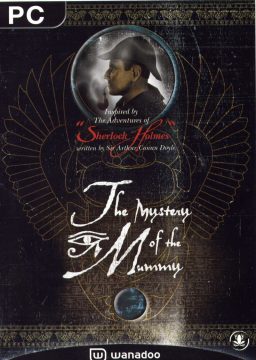
PC Box
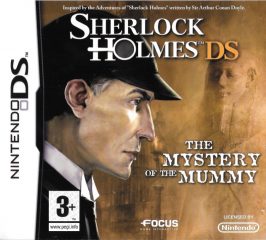
DS Box
Note: Screenshots used, unless stated otherwise, are from the DS remake.
Frogwares, a dual studio in Ukraine and Ireland, came to be in the year 2000, and finally released a complete project in 2002. That game would be the first in their vast and long running Sherlock Holmes series, known as The Mystery of the Mummy. It would be what made them names in the European adventure game scene, eventually breaking through to significant attention from more mainstream outlets and audiences with The Sinking City in 2019. Or, rather, the chaos around who actually owned that game. Story for another day.
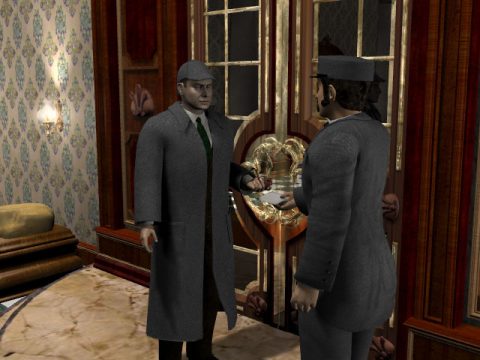
Sherlock Holmes: The Mystery of the Mummy (PC Version)
It makes you forget that their first game was a strong success in its own right. While having a solid launch for a small studio’s first PC release, the game as had legs over time and even managed to reach a million sold by 2013. The actual reviews, however, were fairly average, and that feels fair. The Mystery of the Mummy isn’t very representative of what this series would become, lacking the focus on mystery solving and deduction in favor of being a point and click inventory adventure with a good few logic puzzles. Basically, if you played a European adventure game from the time, you have a solid idea what to expect, though it may be a tad rougher than some of its contemporaries.
Holmes has been requested by his cousin to to find her missing father, Lord Montcalfe, popping into his manor to look into things (Watson was too busy to come). Upon arriving, Holmes finds himself surrounded by Egyptian artifacts, collected by Montcalfe in his expeditions, and has to figure out a variety of puzzles built into the manor to progress and find the missing researcher. Eventually, it becomes clear that he isn’t alone.
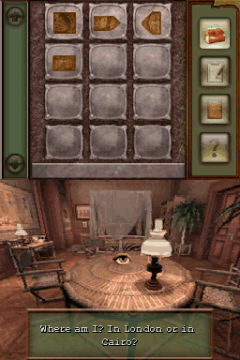
There are actually two versions we need to talk about, because they’re quite different. The original 2002 PC version and the 2009 DS version are basically the same game, but changes were made due to the limitations of the DS itself, along with a few other tweaks. The DS version mostly removes a few puzzles that don’t work with the system’s much lower resolution (such as the opening puzzle based around the dates of the displayed mummies). A handful of puzzles are also modified to be a bit easier, and some of the tougher logic puzzles are just gone now (such as a slider in the cellar and a Japanese tile puzzle). It also adds in a new puzzle that uses the unique functions of the DS, requiring you to partly close the console to see a hidden code.
If you want a more manageable experience, go with the DS version. You even get the bonus of the cutscenes being in lower res, hiding the poor model work. You may also want to go portable because the PC version does not like Windows 10 at all, and getting that version running on modern hardware without a glitchy cursor is a serious crap shoot. The games share cutscenes and story so you still get the same narrative either way. The one sticking point is the DS version doesn’t match the subtitles properly with the included audio, though that is honestly kind of a charm point in seeing how much they don’t match.
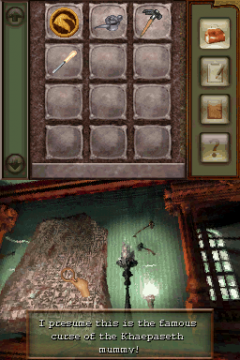
If you were paying attention to that story sum up, you may have already spotted the problem. Sherlock Holmes works best as a character when he has people to bounce off of, getting to show is brilliance and dickish personality in equal measure. The vast majority of this game is Sherlock thinking to himself while looking at things, with a pretty simple mystery at its core. You could easily replace him with any random character and little would change. What this means is that as a Sherlock Holmes adventure, The Mystery of the Mummy kind of fails. What is left is a early 2000s point and click European adventure game, and as that, it’s nothing particularly special.
Without a strong narrative, what’s left is the atmosphere of the manor and the variety it offers, along with the puzzles. Said puzzles are fine, but don’t feel like they quite click together as they should, especially with the inventory puzzles placed alongside the logic ones. The DS version is easier, but also moves arguably too fast as a result of losing the more infuriating puzzles. What it does keep is the manor, which isn’t so much a spooky setting as it is a fun one.
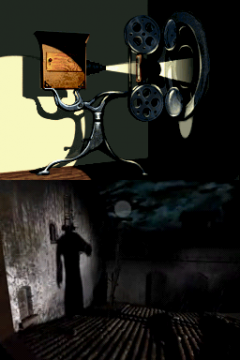
Montcalfe’s Egyptian escapades have turned his home into a museum, with rooms packed with trinkets, mummies, and obtuse security puzzles. It’s a good setting for a puzzle focused adventure game, and the theme slowly changes the deeper you go in, so no room ever feels like the last. This is the one element of the game that makes it feel somewhat unique for its genre, giving it an otherwise lacking identity. The few bits of story in there also help keep things interesting by adding further context, especially when you hit the second half of the adventure.
The most interesting aspect of the game is what would come after it, and boy, did a lot come after it. Frogwares quickly released another Sherlock game in 2004, one that would focus on being a more authentic experience to the Sherlock Holmes stories, and that game is where things would really solidify into the modern series we know now.
